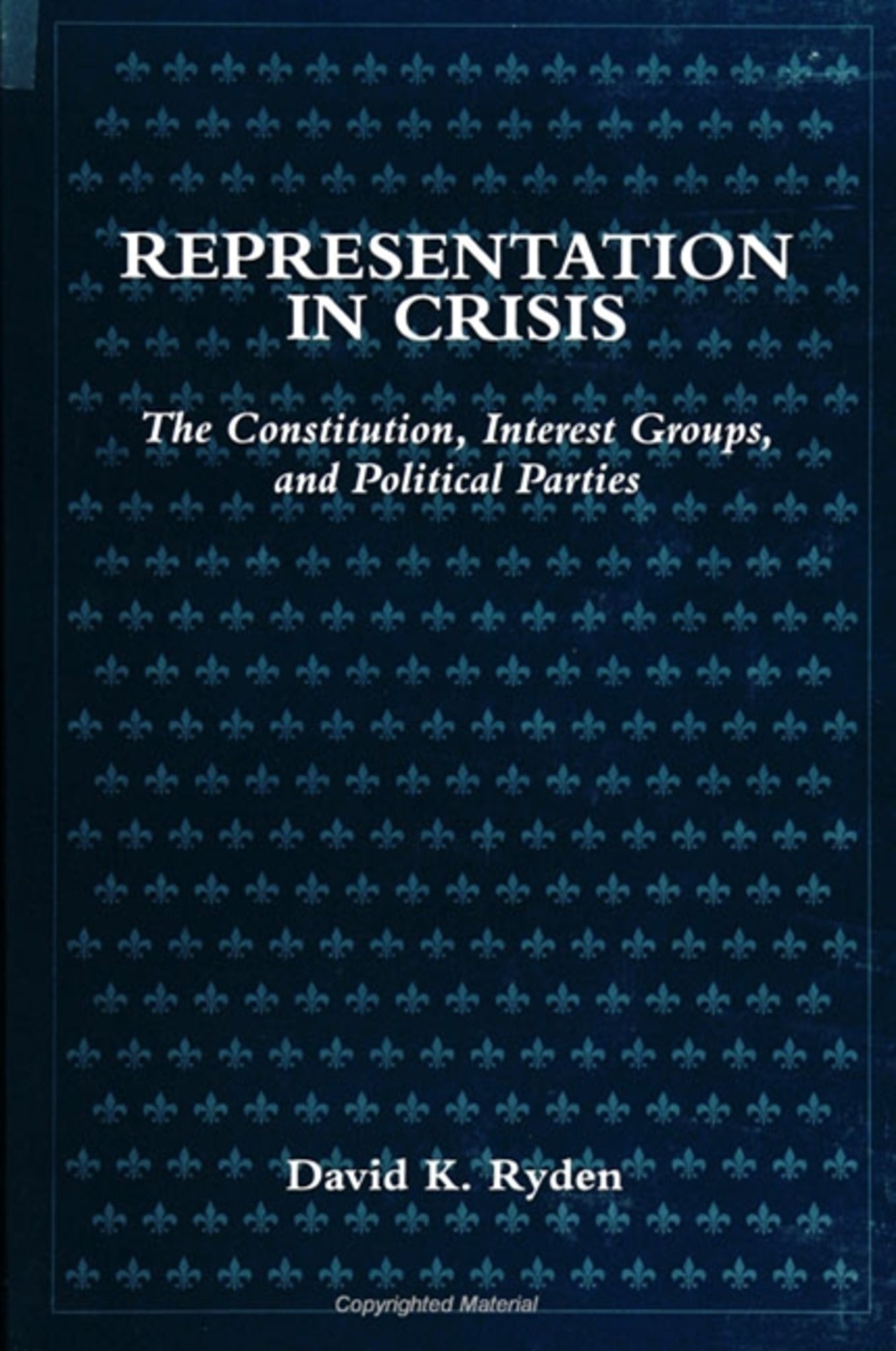We're sorry. An error has occurred
Please cancel or retry.
Representation in Crisis

Some error occured while loading the Quick View. Please close the Quick View and try reloading the page.
Couldn't load pickup availability
- Format:
-
03 July 1996

Details how the Supreme Court has impoverished the constitutional standing of political parties, thereby contributing to a crisis of representation.
Confronting a fundamentally important but often neglected reality in American politics, this book shows the powerful influence of the courts in determining the shape and operation of our politics. The author exhaustively details how the Supreme Court has impoverished the constitutional standing of political parties in areas of redistricting, campaign finance, ballot access, patronage, and party primaries, opting instead for superficially appealing notions of group-based representation.
Ryden demonstrates how the Supreme Court, by checking virtually everything undertaken by the more "political" branches, of government, has exerted powerful influence on how the political system operates and how politics plays out at the most practical level. The book details the Court's attraction to group-based approaches to representation currently in vogue and offers persuasive evidence that while well-intended,such approaches only feed the crisis of representation afflicting this country. These approaches, Ryden aruges, compartmentalize and separate out those being represented rather than cultivate a more unified, inclusive, and ultimately healthier scheme of representation. This compelling indictment of the Supreme Court's constitutional theory of representation offers a much-needed prescription for how the Court might better perform its role as ultimate guardian of representative government.


"Ryden tackles a topic that has been poorly researched—the legal regime surrounding representation and political organizations engaged in representation. He deals with the real problems of representation, the dilemmas and contradictions inherent in the topic. The strength of this book is the assembling in one place of important information on the law and potential law of representation as it applies to political organizations. Then this new assemblage is put in the context of the scholarly literature on the topic. This is a very important topic, both for scholars and practical politicians." — John Green, Bliss Institute, University of Akron
"A superior work of scholarship, well written and carefully argued. Ryden skillfully analyzes complex legal issues in terms that lay readers will be able to follow and understand. I think the book will be recognized in the field as a major contribution opening new lines of thought." — A. James Reichley, author of The Life of the Parties
Introduction
1. The Labyrinth of Representation: Structures, Systems, and Institutions
2. Voting Rights and Political Representation in Constitutional Law: The Primacy of Individualism
3. Beyond Individualism: The Group Right to Representation
4. Group Theory and the Pluralist Challenge to Representation
5. The Quest for Representation in a Pluralist Democracy: Group-Centered Representation (or the Neopluralist Response)
6. Party Subsystems as a Response to the Neopluralist Argument
7. The Law of Reapportionment: Party-Poor Theories of Representation
8. Parties and State Regulation of Access to Elections: Association Without Organization
9. Party and Patronage: Organizational Glue, Payment for Services, or Graft?
10. A "New and Improved" Theory of Representation: Institutionalized "Conflicts of Interest"
Appendix A
The Attitudinal Environment
Appendix B
Survey Questionnaire and Statistical Tallies
Appendix C
Group Typologies and the Challenges of Implementation
Notes
Bibliography
Index



